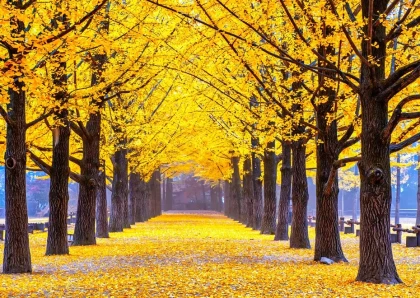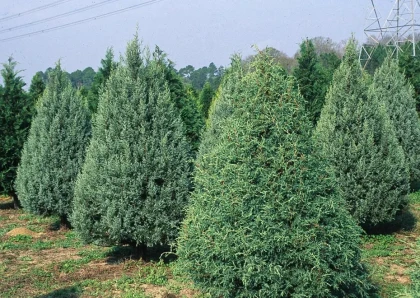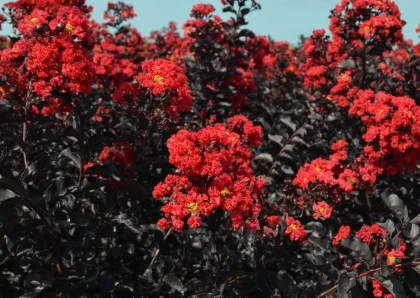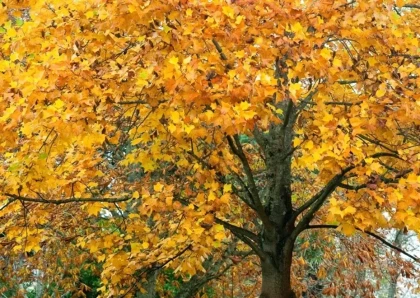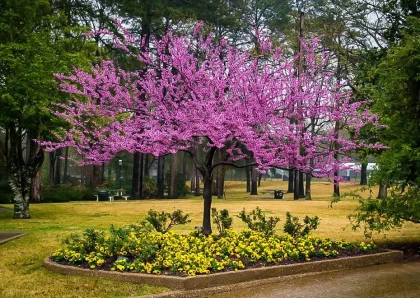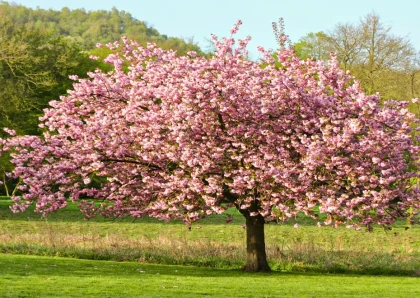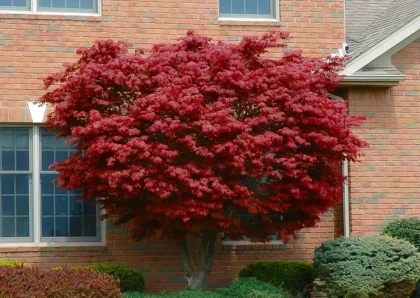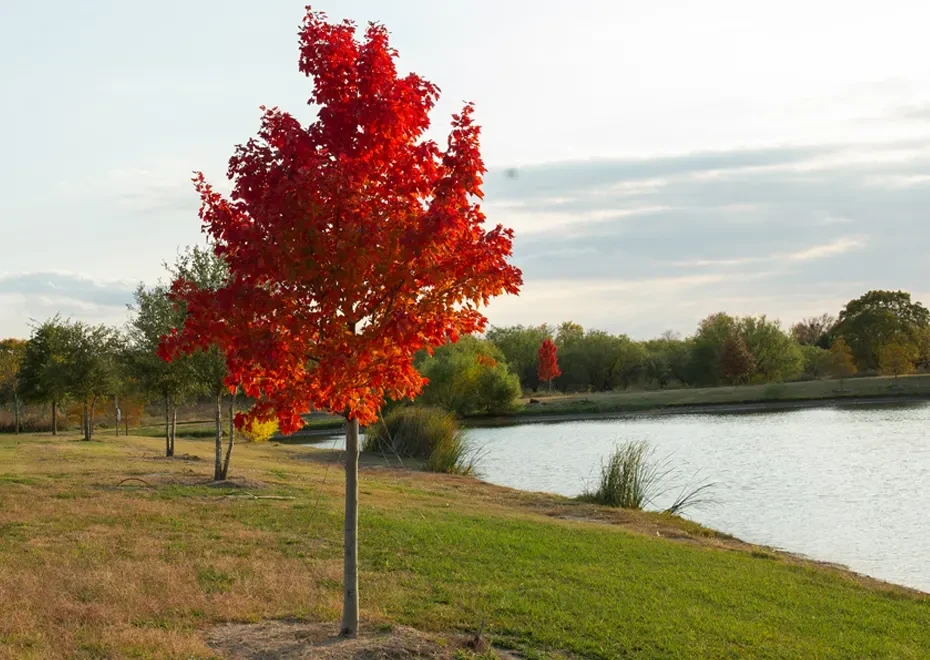
Brandywine Maple Tree
Overview
History of the Tree
The Brandywine Maple Tree, scientifically known as Acer rubrum 'Brandywine,' is a magnificent deciduous tree that originated in North America. It was first discovered and cultivated by renowned horticulturist Peter J. Hatch in the late 20th century. Since then, the Brandywine Maple Tree has become a popular choice among gardeners and landscapers for its exceptional beauty and outstanding performance in various climates and landscapes.
Detailed Description of the Tree
The Brandywine Maple Tree is a sight to behold. It features a broad, rounded canopy with deeply lobed, glossy green leaves that turn into a breathtaking blend of orange, red, and purple hues during the fall season. This tree typically reaches a height of 40 to 50 feet (12 to 15 meters) and spreads approximately 30 to 35 feet (9 to 10.5 meters). During the spring, small clusters of red flowers emerge, adding delicate beauty to the landscape. The Brandywine Maple Tree is known for its vigorous growth and ability to adapt to various soil conditions.
Types of the Brandywine Maple Tree
The Brandywine Maple Tree is a specific cultivar of the Red Maple (Acer rubrum). Within this cultivar, slight variations may occur due to factors such as climate, soil conditions, and individual genetic characteristics. These variations contribute to the uniqueness and adaptability of the Brandywine Maple Tree, allowing gardeners to select the perfect specimen that suits their specific preferences and growing conditions.
Importance of the Brandywine Maple Tree
The Brandywine Maple Tree holds significant importance in the realm of urban forestry and landscape design. Its vibrant fall foliage creates a stunning display of colors, adding beauty and interest to any outdoor space. The tree's shade-providing canopy offers respite from the sun during hot summer months, making it an ideal choice for parks, gardens, and residential areas. Additionally, the Brandywine Maple Tree contributes to the overall health of the environment by improving air quality, reducing erosion, and providing habitat and food sources for various wildlife species.
How to Care for the Brandywine Maple Tree
Caring for the Brandywine Maple Tree is essential to ensure its health and longevity. Follow these care tips:
- Planting: Choose a location with well-drained soil and full sun to partial shade. Dig a hole that is wide and deep enough to accommodate the tree's root ball.
- Watering: Provide regular watering during the first year after planting to establish a strong root system. Once established, the Brandywine Maple Tree is relatively drought-tolerant but benefits from occasional deep watering during prolonged dry spells.
- Fertilization: Apply a balanced, slow-release fertilizer in early spring to provide essential nutrients. Follow the manufacturer's instructions for proper dosage.
- Pruning: Prune the tree during the dormant season to remove dead, damaged, or crossing branches. Pruning should be minimal to maintain the natural shape and form of the tree.
- Mulching: Apply a layer of organic mulch around the base of the tree, leaving a few inches of space around the trunk. Mulching helps conserve moisture, regulate soil temperature, and suppress weed growth.
Benefits of the Brandywine Maple Tree
The Brandywine Maple Tree offers numerous benefits for homeowners and landscapes. Its stunning fall foliage provides a colorful spectacle, enhancing the aesthetic appeal of any outdoor space. The tree's shade-providing canopy helps reduce cooling costs during hot summers and creates a comfortable environment for outdoor activities. Additionally, the Brandywine Maple Tree is relatively low-maintenance, making it an excellent choice for both experienced and novice gardeners.
How to Plant the Brandywine Maple Tree
Planting the Brandywine Maple Tree is a straightforward process. Follow these steps:
- Choose a suitable location: Select a site with well-drained soil and ample sunlight.
- Dig the planting hole: Dig a hole that is wider and slightly shallower than the tree's root ball.
- Prepare the root ball: Gently loosen the roots and remove any damaged or circling roots.
- Place the tree in the hole: Position the Brandywine Maple Tree in the center of the hole, ensuring the top of the root ball is level with or slightly above the surrounding soil.
- Backfill the hole: Fill the hole with soil, firming it gently around the roots to eliminate air pockets.
- Water and mulch: Water the newly planted tree thoroughly and apply a layer of organic mulch around the base, leaving a few inches of space around the trunk.
No listings available
Related Products
Questions & Answers
What do you want to know about this product?
Reviews (5)
LeafLover86
A Majestic Beauty That Captivates the Landscape
The Brandywine Maple Tree is a stunning addition to any garden. Its vibrant fall colors and graceful form make it a standout.
TreeHugger99
Impressive Tree with Spectacular Fall Foliage
The Brandywine Maple Tree never fails to amaze me with its breathtaking display of autumn hues. A true standout in my garden!
ShadeSeeker74
A Shade Provider Extraordinaire
The Brandywine Maple Tree not only adds beauty to my landscape but also creates a cool and comfortable retreat during hot summer days.
EffortlessGardener
Low-Maintenance Elegance
I'm impressed by how easily the Brandywine Maple Tree fits into my busy schedule. It requires minimal care, yet rewards me with stunning colors every fall.
Nature's Artistry in my Backyard
Nature's Artistry in my Backyard
With the Brandywine Maple Tree, I have a living masterpiece right outside my window. Its graceful branches and fiery foliage never fail to inspire awe.





